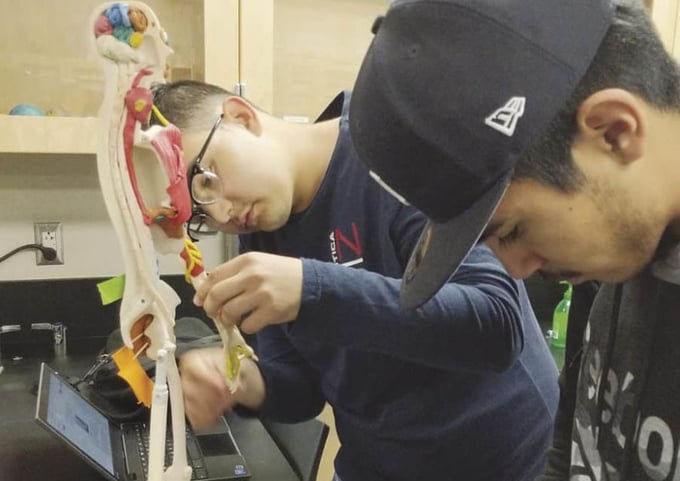James Tilton is an English teacher at Eastside High School in Lancaster, California, as well as an author and the creator of the Story Time Teen website.
Students shouldn’t be the only ones working together. Teachers should be, too. That’s one of the big ideas behind Eastside High School’s Biomedical Academy, which was recently recognized as one of only 12 programs nationwide to receive the coveted Gold Certification from Linked Learning.
This prestigious accomplishment is even more impressive when one considers that 86 percent of Eastside’s students are socioeconomically disadvantaged. To help these students find success, teachers in the Biomedical Academy work across subject areas to support real-world learning. For freshmen, this starts in PLTW's Principles of Biomedical Science course taught by veteran educator Kerin Coffey.
Coffey is passionate about cross-curricular collaboration. She and I work closely to develop a scaffolded curriculum.
“We try to integrate,” Coffey explains. This integration can take many forms. For example, students in my English class begin the school year by researching and then presenting on the medical careers outlined in PLTW’s year-long Principles of Biomedical Science course. During the presentation, I record the audio so that I can post it on the class podcast, which I created for free using the Anchor app. Later in the school year, when students complete career journals in Principles of Biomedical Science, they go back and listen to those uploaded recordings.
This inter-curricular approach ensures that students are gaining research skills, learning how to present effectively, revisiting information throughout the school year, and learning from their peers. Integrated assignments like this are central to the success of Eastside’s Biomedical Academy.
Whether it’s a science fiction novel or a research paper, Coffey and I regularly look for ways to draw connections between our classes. These connections provide our students with both continuity and support.
“If I don’t understand something with one teacher, I might with the next,” says Sarah Hernandez, one of our students.
“I am able to look at that particular subject through a different point of view,” adds Kira Kalliomaa, another student. “It broadens my perspective.”
The results speak for themselves – 89 percent of freshmen students reported increased confidence in their ability to conduct research, and 97 percent felt prepared to bring those skills to their other classes.
And it’s not just freshmen who benefit from this approach. “We have a very high college acceptance rate in our Biomedical Academy,” says Eastside Principal Charles Dunn. “They have some of the highest AP scores. It opens up a lot of doors.”
According to Vice Principal AJ Paramesvaran, teacher collaboration is the key to this success. “What’s carried through pretty strong here at Eastside High School is the idea of teamwork,” he says.
Students are noticing, and they’re beginning to follow the example set by their teachers. In fact, 96 percent of these students believe that their experience in the Biomedical Academy has taught them to become a more responsible and trustworthy group member.
Many teachers talk about the importance of students learning to collaborate – and for good reason. According to many industry professionals, it’s one of the most important qualities in the 21st Century workplace. It’s time that teachers start collaborating, too.
PLTW’s blog intends to serve as a forum for ideas and perspectives from across our network. The opinions expressed are those of each guest author.


